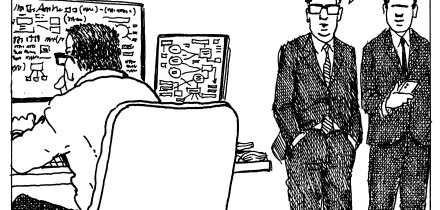By Professor Richard Roberts, King's College London
Since the Brexit referendum, there has been much posturing and discussion about whether euro-denominated derivatives trading will need to move from London to the eurozone — a fight which has drawn in theBank of England, the ECB, regulators, and politicians. Even US regulators have got involved.
The related prize is the relocation of foreign exchange trades involving the euro. London hosts 43% of euro FX trades, compared to just 16% in the whole of the euro area (less than the US, which hosts 19%).
London’s pre-eminence as the world’s leading centre for FX is long-standing and has increased over the last three decades, in dollars and in euros. Since the latter’s launch in 1999, London’s share of euro trades has gone up by 10 percentage points while the eurozone’s has declined by a similar amount.
A key deep-lying factor is London’s historical position as a hub of the world’s submarine communications cable network.
All at sea

The commercial development of the electric telegraph began on land in the 1830s, led by the UK and US. The submarine cable made its debut in 1844 when inventor Samuel Morse strung one across New York Harbour. Dover and Calais were connected by subsea cable in 1851, linking London and Paris.
But the crucial milestone was the transatlantic cable in 1866 that cut the communication time between London and New York from 10 days by ship to the speed of an electric impulse along a copper wire. For FX traders, "cable" remains the slang for spot dollar-sterling to this day.
By 1900 the world’s coastal cities were connected in a global network of 350,000km of submarine cables, with London the foremost global hub.
Connection by submarine cable resulted in the convergence of market prices and the placement of buy and sell orders, though not continuous global trading, because of the network’s limited capacity.
Engineering advances from the 1890s enhanced capacity and reliability; by 1910 the cost of a telegram had fallen to 0.5% of the 1866 level and a message passed between the London and New York stock exchanges every six seconds. Then two world wars and the Great Depression interrupted further progress until the 1950s.
The post-war decades saw the replacement of copper cables by coaxial cables with enhanced speed and capacity, ushering in the affordable international telephone call.
London’s unrivalled cable connections facilitated the dynamic development of FX trading in the City in the 1970s and 1980s following the breakdown of the Bretton Woods fixed exchange rate system in 1973. In 1989 the first Bank for International Settlements triennial survey reported that London conducted 25% of global foreign exchange dealings; in 1998 it was 32%.
Submarine cable communication was revolutionised from the late 1980s by the advent of fibre-optic cables that transmit data at the speed of light, with vastly greater bandwidth than their copper or coaxial predecessors. The fibre-optic cables were laid along the historical seabed arteries of copper and coaxial cables, with London, New York and Tokyo reinforced as the leading global hubs; other financial centres largely branch off their internet backbones.
The FX market and sharks
An initial teething problem (literally) of the fibre-optic cables was attacks from sharks sent into a feeding frenzy by their electric current.
Fibre-optic cabling provided cheap and efficient mass capacity for the development from the early 1990s of electronic FX broking and trading.
Electronic trading soon dominated foreign exchange trading in London, using the matching servers of EBS (Electronic Broking Services) and Thomson Reuters, the leading platforms, located in London, New York and Tokyo.
Today there are some 350 fibre-optic submarine cables that connect computers around the world; 99% of international communications traffic is carried by submarine cable (the remainder by satellite).
The essential role of submarine cables in international communications gives a competitive advantage to financial centres located adjacent to oceans because of their superior (faster, cheaper) direct connections to the spine of the network.
By one estimate, the calibre of London’s cable connections has boosted its share of global FX turnover by as much as one-third since the advent of electronic trading.
A comparison of the development of FX business in Singapore and Zurich has suggested that the former’s more dynamic performance owed much to its littoral direct connection, relative to landlocked Zurich.
A few terrestrial fibre-optic cables have been laid between financial centres in Europe and the US but they are costly and cussed to build and have been mostly unneeded.
What this means as regards Brexit is unclear, but London’s cable superiority and critical mass as a financial centre, not to forget institutional inertia, suggest that any shift of euro FX trading to the EU will be, at most, gradual, unless politics trumps the market.






